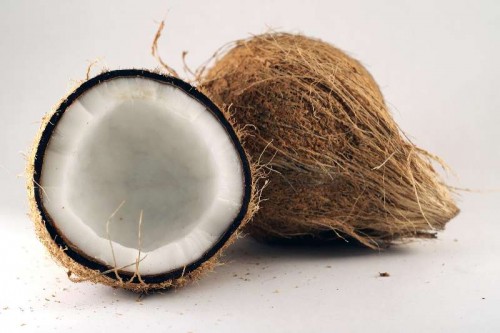 By Sanu George
By Sanu George
It’s time the coconut industry in India got a makeover.
Producers and officials lament that although India is one of the largest producers of coconuts, it has failed to extract exquisite high value goods – unlike some other countries. Even some non-coconut producing countries are using coconuts to manufacture a wide variety of products in the fields of beauty care, pharmacy and more.
The dominant products made from coconuts in India remain coconut oil and copra, besides some low value products.
“The value addition to coconut has undergone a sea change abroad,” T.K. Jose, chairman of the Coconut Development Board, said.
“An American company produces 32 types of products while a company in Britain sells a 400 gram coconut butter for 10 pounds sterling. You also get face cream made from tender coconut,” Jose said.
“Coconut oil and copra are certainly needed, but the need of the hour is value addition,” he said.
According to him, the private sector has succeeded in giving value addition in most countries.
“It is through a perfect combination of entrepreneurship, research and technology that value addition can take place,” he explained.
“The government should play the role of a facilitator. As and when this happens in our country, coconut would be the biggest money-spinner.”
Much of this is happening, Jose said, in countries like Sri Lanka, the Philippines, Indonesia, Thailand and China.
Jacob Mathew, a farmer by profession, said that the biggest crisis in the coconut industry in Kerala was the high cost involved.
Kerala has 180 million coconut trees, and the state contributes 42.4 percent of the total coconuts produced in the country.
According to Mathew, who hails from Kottayam, the daily wage for a labourer has now touched Rs.700.
“In Kerala, the breed of coconut climbers is facing extinction. So those in the profession charge close to Rs.50 per tree to cut the coconuts. Not long ago, my income from selling coconuts was around Rs.5,000. Today it is under Rs.1,000,” Mathew said.
But the Kerala government has taken to promoting Neera, which is tapped from the coconut tree. Neera, which is different from toddy, is sweet and a proven health drink.
Kerala Agriculture Minister K.P. Mohanan admitted that value addition has not taken place in the industry. “At the moment, value addition has just begun,” he said.
The 51st ministerial meeting of the Asian and Pacific Coconut Community will be held in Kochi next month and elaborate discussions will be held on all aspects of coconut, including processing, trade and marketing.
“We expect to get valuable inputs on how to speed up value addition,” said Mohanan.
Shaji Abraham, who owns a coconut farm on the Kerala-Tamil Nadu border, said one way to cut down production cost was to go for cultivation of dwarf type coconut trees.
“I have seen a few varieties like the Thailand Dwarf Green and Malayan Yellow where coconuts can be plucked from the ground.”
Jose felt that the coconut industry will revive dramatically if it is made part of Prime Minister Narendra Modi’s ‘Make in India’ campaign.